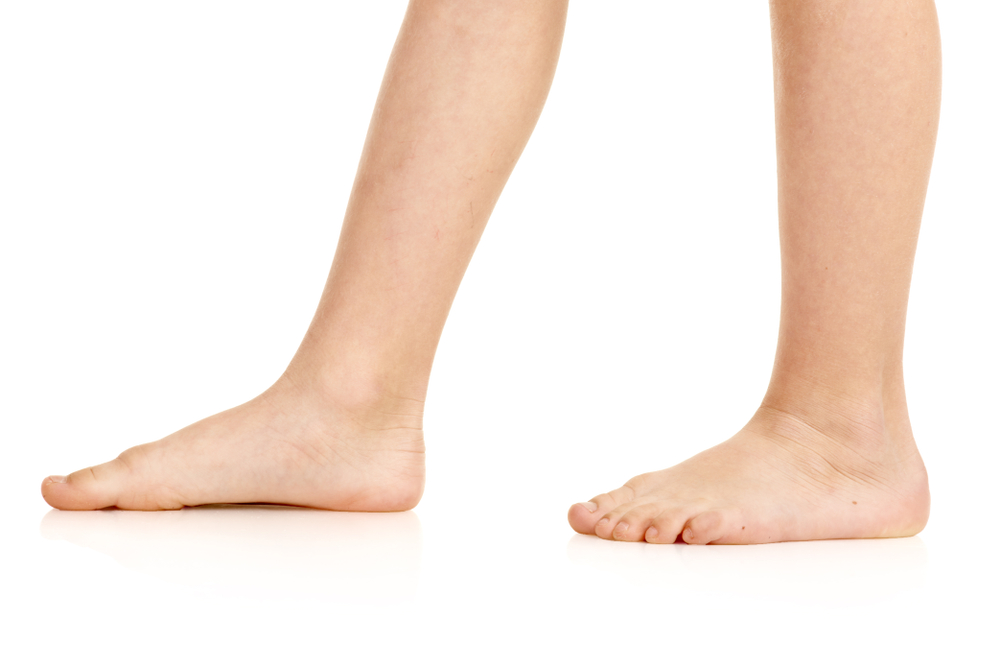Are you the parent of a young child whose feet seem a little too flat to you? You have a right to be concerned. While studies have shown that 97% of young children have a flat valgus foot, it may not correct itself without intervention.
Most cases of flat foot usually resolve in the first few years of life, when the child is between the ages of 3 and 10.
However, a number of cases of flat foot persist after adolescence and through adulthood. The adult’s flat foot causes joint pain and sometimes serious postural problems.
In order to avoid these kinds of situations, it is important to know how to recognize and identify flat foot in children.
What causes flat foot among infants?
The vast majority of children are born with a collapsed plantar arch.
It is only during the beginning of the walking stage and during their growth that it takes on an arched form.
As a general rule, normal plantar arches are completely defined by the age of 10 years.
Thereafter, minor changes in the shape of the foot may still occur (during puberty, for example).
After this period, the chances of a plantar recovery without podiatry intervention are slim.
The flat foot that persists until adulthood has its origins in childhood.
It is generally due to the following factors:
- Reduced muscular strength
- Instability of the ligaments
- Knock-knees (genu valgum)
- Obesity
Some hereditary diseases can also promote flat foot in children:
- Marfan syndrome, which leads to unequal limbs and hyperlaxity of ligaments
- Ehlers-Danlos syndrome, which causes ligament hyperlaxity
When should you take action?
In its early stage, the child’s flat foot is usually not uncommon. The sole of the foot is covered with fatty pads that will gradually be replaced by the arch of the foot.
In the case of a foot that remains flat, it is this step of the process that is not properly completed.
If you recognize the following signs in your child who is older than 3 years of age, they may have a more serious problem with their flat foot:
- An Achilles tendon that appears shorter or deformed
- A relatively rigid foot
- Unbalanced gait (pronation)
- Abnormally worn shoes
- A tiptoe gait
- Pain in feet, ankles, legs or knees
However, one should remember that the child’s feet may reposition themselves at a later stage, during growth or puberty.
A consultation with a podiatrist should be considered, especially if the pain persists and movement becomes painful.
What are the solutions to consider?
If you want to make sure that your child does not grow up with flat foot, there are several options available to you.
Your podiatrist can help you make an informed choice.
They first evaluate your child and, if necessary, diagnose flat foot.
In addition to relying on the natural growth process, the following treatments can be recommended by the attending podiatrist:
- A program of corrective exercises to be done at home
- Physiotherapy
- A prescription for plantar orthotics or orthopedic insoles
Although quite rare, the podiatrist can also consider foot surgery.
However, before performing any surgical procedures, the podiatrist performs additional tests such as digital foot radiography and a biomechanical examination.
PiedRéseau: a reliable resource for the management of your child’s flat foot
Flat foot in children is not automatically cause for concern. The chances that it will naturally regain a normal curvature are quite high.
However, if your child expresses discomfort or has difficulty moving around, you should seek the advice of a health care professional.
PiedRéseau’s podiatrists are able to evaluate the situation and propose the most appropriate treatment for your child’s condition.

